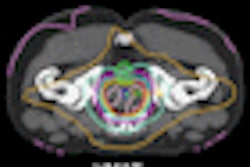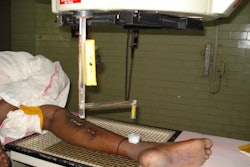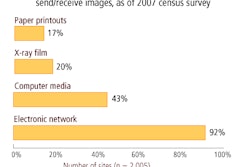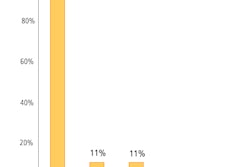Stereotactic body radiation therapy (SBRT) is emerging as an effective treatment for peripheral non-small cell lung cancer, but not without chest wall toxicity for some patients. Rib fractures and severe chest wall pain can occur months after treatment.
A study presented at the 2008 American Society for Therapeutic Radiology and Oncology (ASTRO) annual meeting by Dr. John-Paul Voroney, a radiation oncologist at Princess Margaret Hospital in Toronto, documented the frequency of these morbidities and their correlation with radiation dose.
Radiation oncologists at Princess Margaret Hospital evaluated 42 patients and noted the level of incidence and time of occurrence of rib fractures. The patients were treated with either 60 Gy or 54 Gy in three fractions. Each patient had at least one follow-up visit prior to 2008 in which a CT scan was performed.
A total of 18 ipsilateral rib fractures that occurred seven to 30 months after treatment were identified in nine patients. These patients had tumors close to the chest wall at a median distance of 0.4 cm, with a range of 0 cm to 1.8 cm. Eleven of the 42 patients, including seven who had rib fractures, reported mild to severe chest wall pain.
Fractures occurred in steep dose gradients. The two patients with rib fractures who were asymptomatic received the lowest radiation doses, ranging from 26 Gy to 47 Gy. Six patients with mild to moderate symptoms had doses ranging from 30 Gy to 70 Gy, and one patient with severe symptoms had an initial dose of 76 Gy.
The researchers fused the follow-up CT scans with the planning scans of each patient to maximize rib alignment from the fracture site to the costovertebral joint. After the entire fractured rib and the site of the fracture were contoured, equivalent uniform dose and doses with and without tissue inhomogeneity correction were calculated.
Fracture is a late problem, according to Voroney, and the median follow-up time of 11 months is six months less than the median time to fracture. He pointed out that statistics for fracture, recurrence, and local control will change over time and that the patients will continue to be followed.
Oncologists at Princess Margaret Hospital now inform patients with tumors near the chest wall of the risk of rib fractures and chest wall pain. The radiation dose protocol for patients with tumors smaller than 3 cm located near the chest wall has been reduced to 48 Gy in four fractions.
"Our chest wall toxicity profile compares to rates of post-thoracotomy pain syndrome in surgical series," Voroney said. "With the high rates of local control with stereotactic body radiotherapy and a lack of treatment alternatives for some patients, chest wall toxicity is a reasonable trade-off."
By Cynthia Keen
AuntMinnie.com staff writer
November 26, 2008
Related Reading
Most radiation oncology patients do not use analgesics, September 29, 2008
Combining chemo and radiation improves NSCLC outcomes for elderly, April 16, 2008
Lung function guides IMRT planning, October 24, 2007
Stereotactic single-dose radiotherapy an option for early lung cancer, August 29, 2007
Copyright © 2008 AuntMinnie.com



















